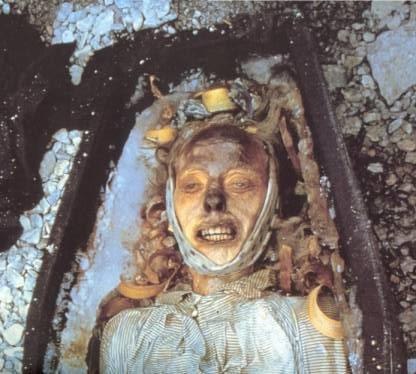In 1845, more than 100 men set sail to the New World in the hope of coming across the Northwest Pass
In 1845, more than 100 men set sail to the New World in the hope of coming across the Northwest Passage, a legendary trade route to Asia (apparently, Lewis and Clark’s failure had only emboldened them). Lead by Sir John Franklin, They set off from Greenhithe, England in two ships, the HMS Terror and HMS Erebus, on 19 May 1845. The two ships carrying the men and their supplies never reached their destination—they were never heard from again. At least not until 1850, when a separate expedition came across what remained of a long-dead community on Beechey Island, including three mysterious graves, and in them the bodies of John Torrington, John Hartnell, and William Braine.More than 100 years later, in 1984, a team of anthropologists traveled to the region to conduct forensic tests on the bodies found in the graves on Beechey Island. After exhumation, it was discovered that all three bodies were spectacularly well-preserved, thanks in no small part to the permafrost in the tundra. So well-preserved, in fact, that the team was able to determine the probable cause of death for the men, who had died some 138 years before.As well as signs of pneumonia and tuberculosis, they learned that each of them had a lethal amount of lead in his system, probably from the ship’s water distillation system, which would have produced high lead content. The amount of lead found in their system was staggering—each man would have needed to consume 3.3 mg a day over the course of eight months to account for it. -- source link
Tumblr Blog : history-and-shit.tumblr.com
#history#john torrington#mummies#preservation#john hartnell#william braine


